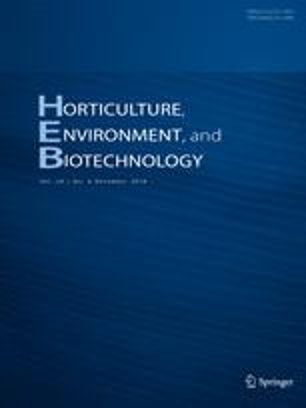Ver ítem
- xmlui.general.dspace_homeCentros Regionales y EEAsCentro Regional Mendoza - San JuanEEA JunínArtículos científicosxmlui.ArtifactBrowser.ItemViewer.trail
- Inicio
- Centros Regionales y EEAs
- Centro Regional Mendoza - San Juan
- EEA Junín
- Artículos científicos
- Ver ítem
The effect of water status on productive and flowering variables in young ‘Arbequina’ olive trees under limited irrigation water availability in a semiarid region of Chile
Resumen
The intense drought affecting olive production in Northern Chile underscores the need to research non-traditional irrigation strategies to obtain the best crop performance. Accordingly, this study aimed to obtain preliminary data to guide future research on this topic. Different water replenishment levels on crop evapotranspiration (ETc; 13.5, 27.0, 40.5, and 54%) were established in a young orchard, cv. Arbequina, from the end of fruit drop (EFD) to full
[ver mas...]
The intense drought affecting olive production in Northern Chile underscores the need to research non-traditional irrigation strategies to obtain the best crop performance. Accordingly, this study aimed to obtain preliminary data to guide future research on this topic. Different water replenishment levels on crop evapotranspiration (ETc; 13.5, 27.0, 40.5, and 54%) were established in a young orchard, cv. Arbequina, from the end of fruit drop (EFD) to full bloom in the next season. We evaluated the influence of plant water status (Ψstem) and crop load, considered as function of fruit number divided by trunk cross-sectional area, on reproductive and productive variables using multiple linear regressions. Our results show that crop load and Ψstem measured from EFD to harvest affected yield components. Nevertheless, Ψstem had the strongest influence on fruit size, pulp development, oil accumulation, and yield. Oil content and yield were reduced by 54% and 50% for each MPa, respectively, from Ψstem EFD-H − 1.8 MPa, an effect that intensified as crop load increased. During the period of flower development (September–November), the number of flowers per inflorescence and percentage of perfect flowers were reduced when Ψstem was less than − 2.0 MPa. These preliminary results showed that bud differentiation, inflorescence and flower formation are highly sensitive to water deficit.
[Cerrar]

Autor
Beyá-Marshall, Victor;
Herrera, Julio;
Fichet, Thomas;
Trentacoste, Eduardo Rafael;
Kremer, Cristián;
Fuente
Horticulture, Environment, and Biotechnology 59 (6) : 815–826. (December 2018)
Fecha
2018-12
Editorial
Springer
ISSN
2211-3452
2211-3460
2211-3460
Formato
pdf
Tipo de documento
artículo
Palabras Claves
Derechos de acceso
Restringido
 Excepto donde se diga explicitamente, este item se publica bajo la siguiente descripción: Creative Commons Attribution-NonCommercial-ShareAlike 2.5 Unported (CC BY-NC-SA 2.5)
Excepto donde se diga explicitamente, este item se publica bajo la siguiente descripción: Creative Commons Attribution-NonCommercial-ShareAlike 2.5 Unported (CC BY-NC-SA 2.5)

